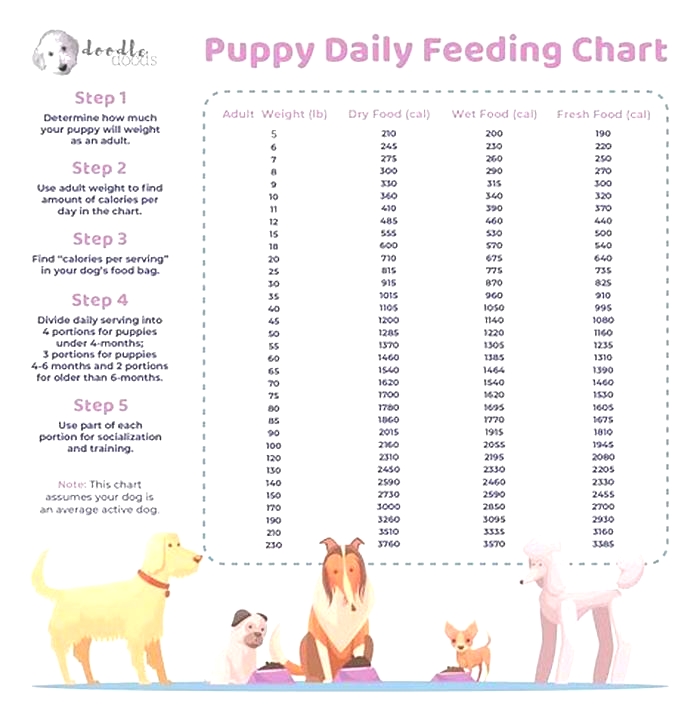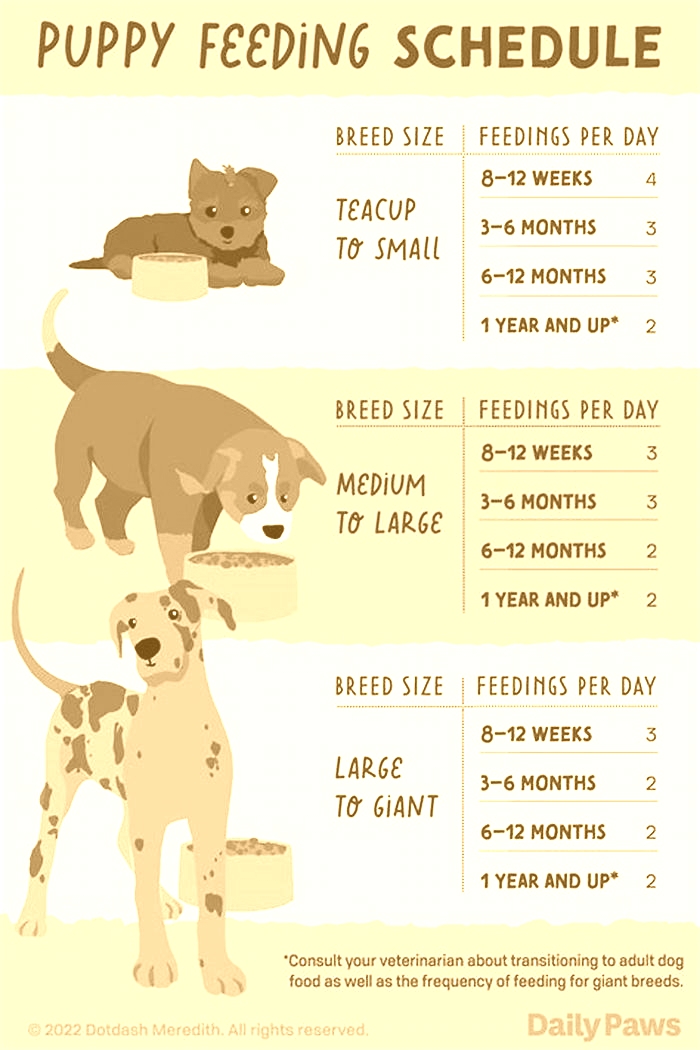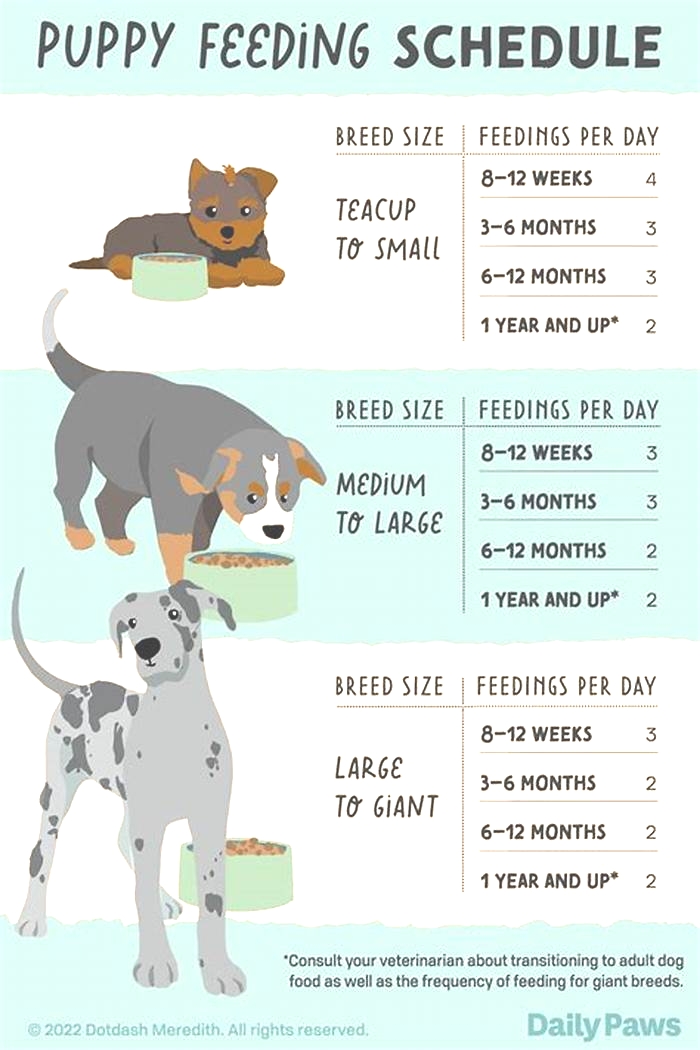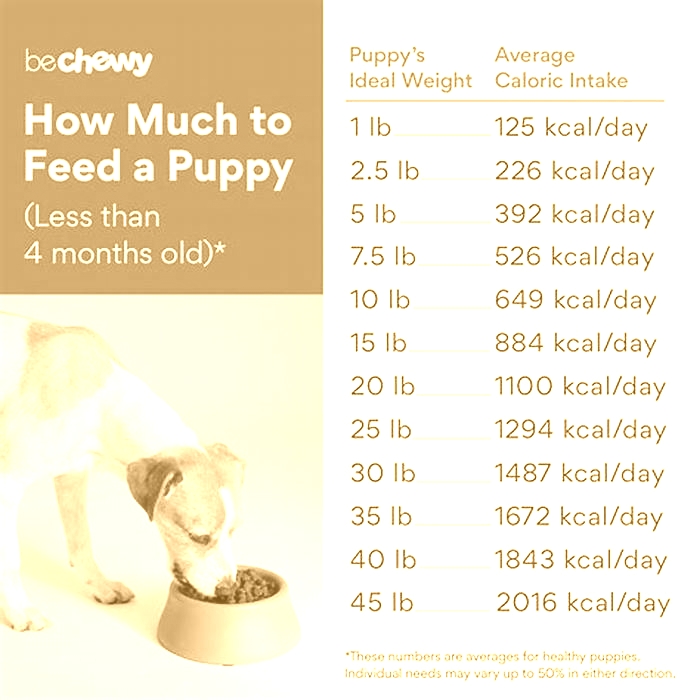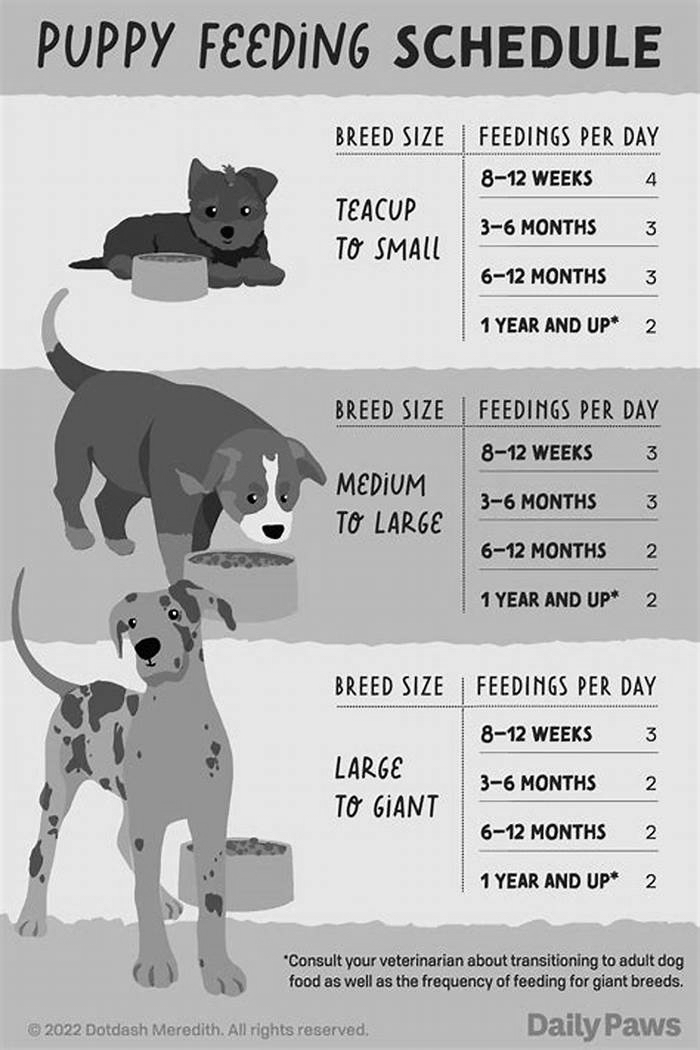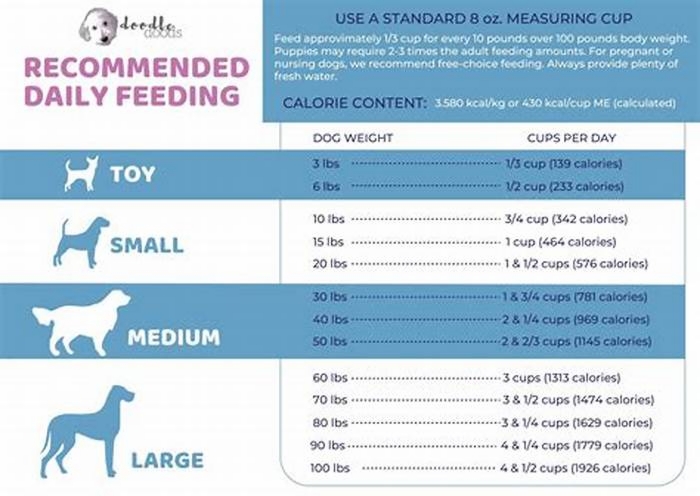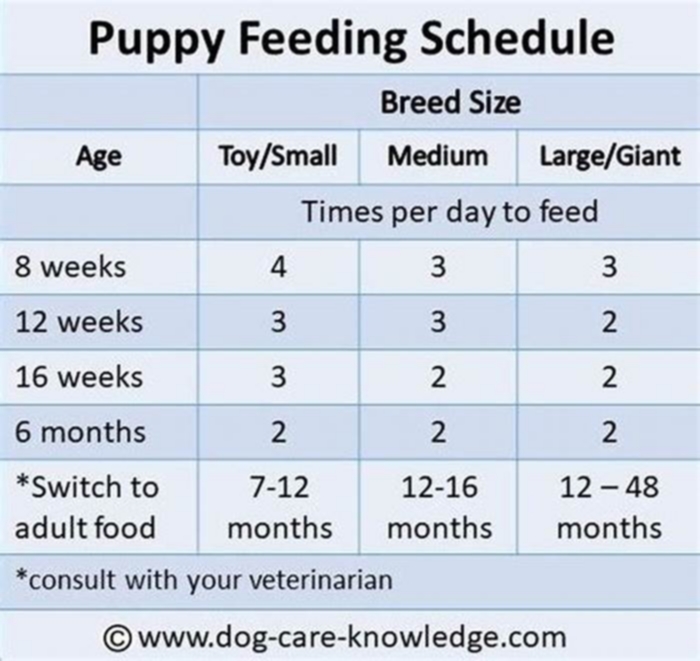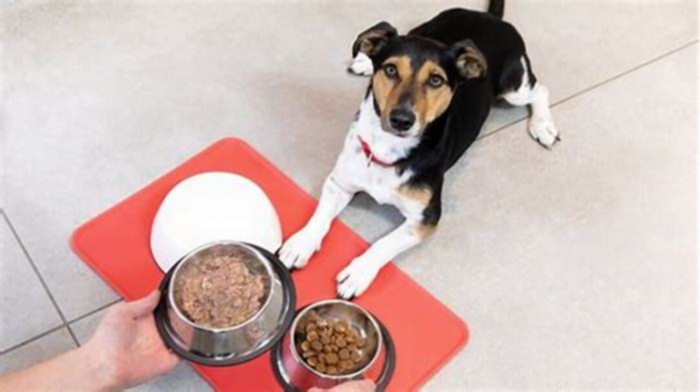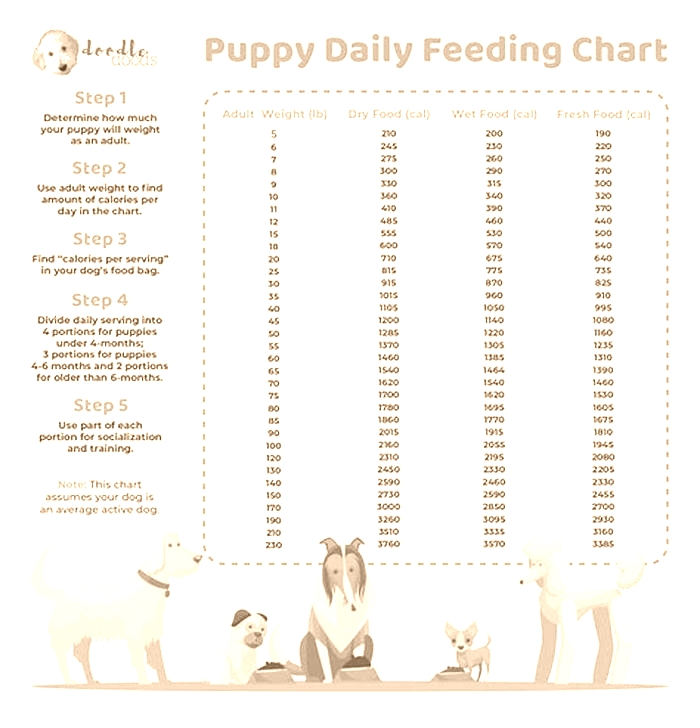How many times a day should you feed an overweight dog
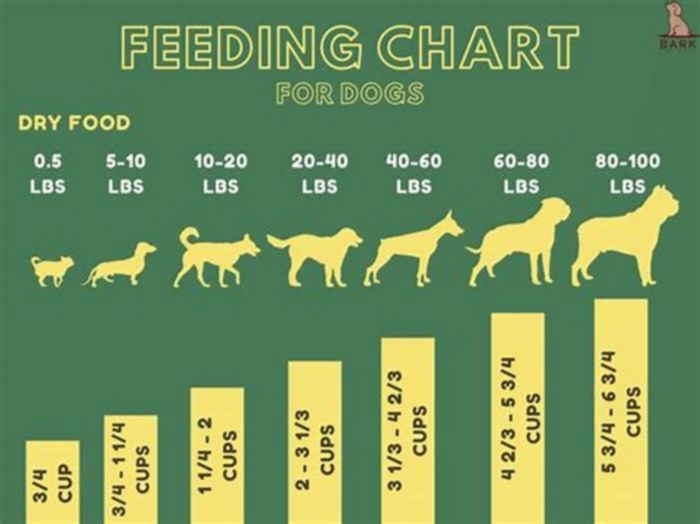
How Many Times a Day Should I Feed My Dog?

Wondering what is your pet's correct feeding frequency? Read on.
If your dog had his way, he would probably eat six or seven meals a day maybe more. The fact of the matter is that dogs love to eat but, as a pet parent, it is your job to make sure that your dog gets the nutrients he needs without going overboard on calories.
Overweight and obesity is just as dangerous for dogs as it is for humans, perhaps even more so since once a dog becomes obese it can be very difficult for him to lose weight. If you are concerned about keeping your dog at a healthy weight, you may be wondering how many times a day you should be feeding him.
There is no magic number and the right answer depends on multiple factors.

Determining Your Dogs Caloric Needs
While deciding how many times a day to feed your dog is important, it is more important to determine the right amount to feed him. What many dog owners do not realize is that different brands and recipes for dog food have very different caloric contents.
For example, the Classic Real Chicken adult dog recipe from Merrick contains 3,585 calories per kilogram, or about 359 calories per cup. In contrast, the Blue Wilderness Chicken Recipe adult dog recipe from Blue Buffalo contains 3,598 calories per kilogram, or about 409 calories per cup.
A difference of fifty calories may not seem significant to you, but you must realize that many dogs only need a couple hundred calories per day, so fifty extra calories each day could make the difference between a healthy body weight and an unhealthy body weight.
Before you can decide how many times a day to feed your dog, you need to determine the total daily amount you need to feed him and then divide it into multiple portions.

In the same way that your body burns a certain number of calories on a daily basis just to maintain essential bodily processes, your dog also needs a certain number of calories for essential energy this number of calories is referred to as his Resting Energy Requirement (RER).
You can calculate your dogs RER by multiplying his weight in kilograms raised to the power by 70 the formula is RER = 70(X kg)3/4. You can perform this calculation yourself or simply find a dog calorie counter or chart online.
Once you know your dogs RER you must then multiply it by his activity factor to determine his total daily calorie requirement.
The more active your dog is, the more energy he will need to maintain a healthy body weight. Puppies also have higher energy needs than adult dogs and senior dogs generally have lower energy needs than adult dogs. For example, to calculate the daily energy needs of the average neutered adult dog you would multiply his RER by a factor of 1.6.
For a working or active breed, the activity factor could be anywhere from 2.0 to 5.0 and, for an inactive or obese dog, it may be as low as 1.0 or 1.2. Puppies aged zero to four months should use a factor of 3.0 and puppies aged 4 months to adult should use 2.0 as their activity factor. Try using an online calorie calculator to determine your dogs daily energy requirements.
Once you have your dogs daily calorie needs, you then need to take a look at the label on your bag of dog food. Locate the Feeding Guide or Feeding Recommendations portion of the label to determine how many calories the product contains this information may also be part of the Guaranteed Analysis.
Then, simply take your dogs total daily calorie needs and divide it by the number of calories per cup to determine how many cups of food your dog needs each day. You can also simply use the chart on the dog food package that estimates a dogs needs based on his body weight. This estimate doesnt take into account different activity levels, however, so it may not be as accurate.
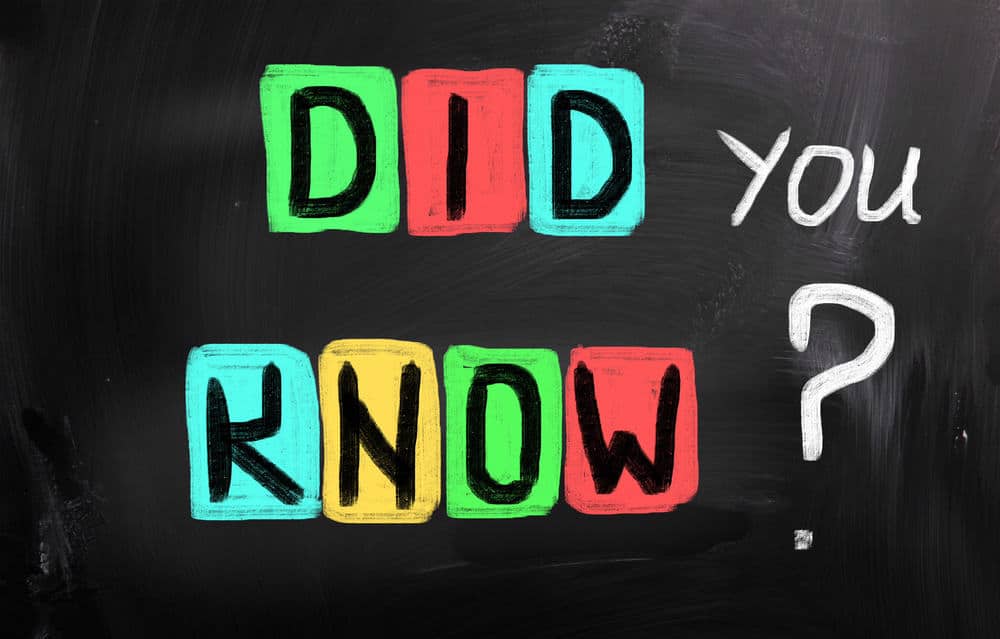
Feeding Tips for Puppies and Adult Dogs
After you have calculated your dogs calorie needs and have determined how many cups of food he needs to meet those needs, your next step is to decide how many times to feed him each day. For the most part, it is a matter of convenience how you choose to divide your dogs daily portion.
If you work a full-time job, it may be easiest for you to feed your dog half of his daily portion in the morning before work and the second half when you return home. This is the best feeding schedule for most dogs.
You must consider, however, that puppies and small-breed dogs have higher energy needs than adults and large-breed dogs so they may need to eat more frequently. Most veterinarians and animal nutritionists recommend three daily feedings for puppies and small-breed dogs.
Another question you may find yourself asking is whether it is okay to simply keep your dogs bowl filled and let him ration his meals himself. This is generally a good idea for puppies because you dont want to risk not feeding your puppy enough.
It may also be a good option for highly active and working breeds. Unless your dog has good self-control and gets enough exercise to balance out the occasional overindulgence, however, measured portions and scheduled feeding times are generally the best way to go.
Again, a difference of just a few calories can be significant for some dogs and once your dog becomes overweight or obese, exercise becomes more difficult or even dangerous which means that losing the extra weight will be tough. Prevention is always the best medicine.
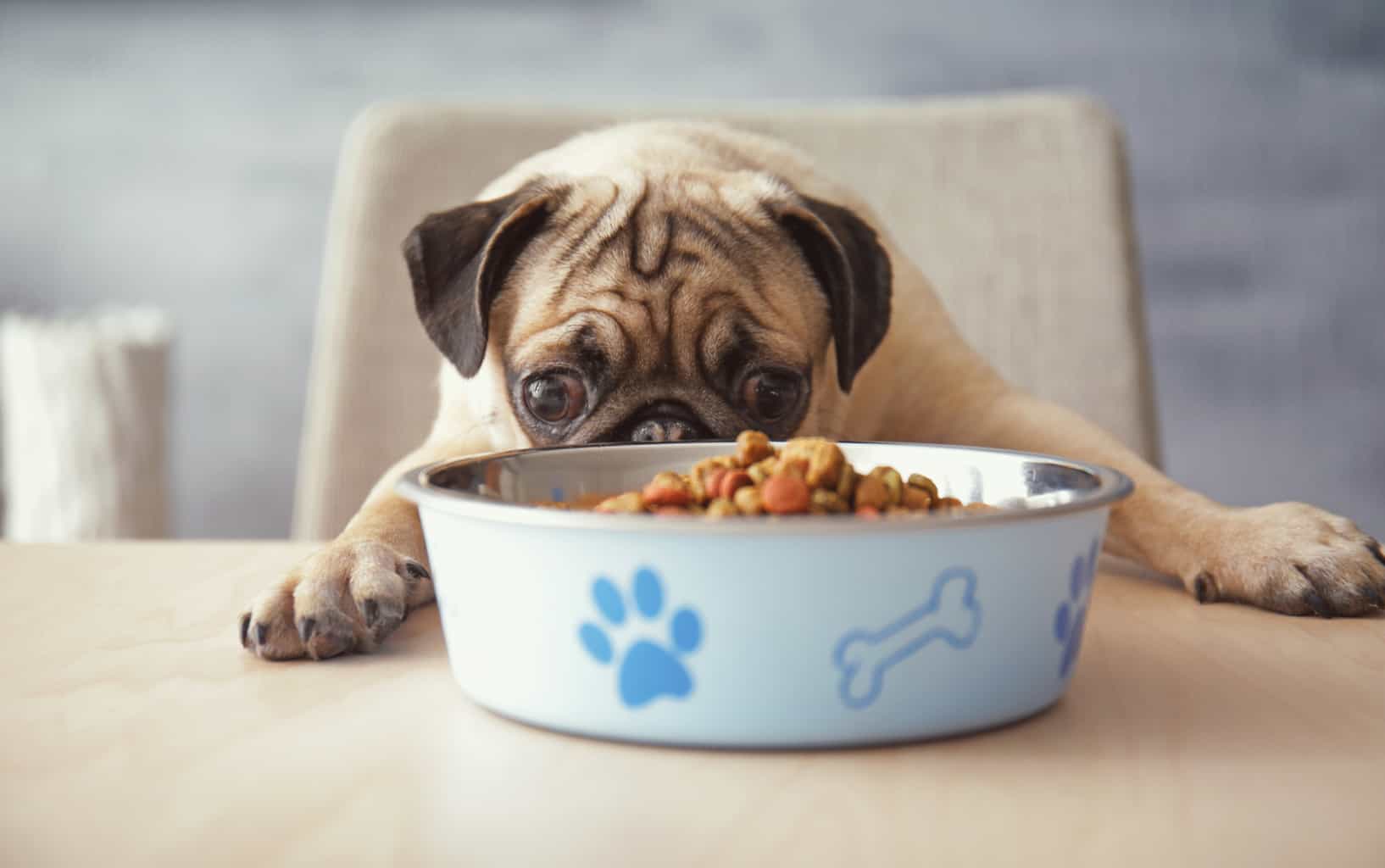
Some dog owners find that when they switch their puppy from free feeding to two or three daily meals, their puppy tends not to eat his entire meal at one time. If you feed your dog dry kibble this may not be a problem, but wet food can spoil if left out for too long.
One way to deal with this problem is to create and stick to a feeding schedule and, at meal time, only leave your dogs bowl out for ten minutes then put it away. It may take a few days, but eventually he will get used to eating his meals at the scheduled time.
But why is this important? If your dog just picks at his food throughout the day it may be hard for you to monitor how much he is actually eating. Loss of appetite is an early symptom for many health problems if you notice your dog eating or drinking less, you should take him to the vet for a check-up.
As a dog owner, it is your job to take care of your dogs needs, and that includes regulating his diet. If you arent sure where to start, try reading the feeding recommendations on your dog food package or speak to your veterinarian.
How Often Should You Feed Your Dog?
Most experts recommend feeding your dog twice a day once in the morning and once in the evening though puppies under five months of age should be fed three to four times a day, or as directed by your veterinarian.
How often and how much should I feed my dog?
Your veterinarian can calculate the exact amount to feed. You can feed your dog one or two times a day. It's best to do it twice daily at 8-12 hour intervals. If you're doing it this way, split the suggested amount found on the bag or you'll feed it double what it needs.
Can you feed your dog once a day?
Feeding your dog once a day is common for many dog owners. Our dogs should actually have the chance to eat at least twice a day if not more. Although some people think that a once a day meal is good enough, dogs can't really tell us if it is. A normal dog's stomach will empty in six to eight hours.
How long after feeding does a dog poop?
After the meal, only wait between 5 and 30 minutes to take your puppy outside. The younger the puppy, the sooner they should be brought out after a meal to potty. As the puppy grows older, they will gain bladder control and learn to hold it longer each day.
How Much to Feed a Maltipoo (Feeding Chart & Guide)
327
Wondering how much to feed your Maltipoo? As a Maltipoo parent, youve definitely asked that question many times!
The perfect portion size for a Maltipoo depends on their age, size, and activity level. But with their small stature and lively personality, determining the right amount can be tricky.
In this feeding guide, well provide Maltipoo feeding charts, recommended daily calories, and tips to keep your pup healthy.
What Factors Impact How Much to Feed a Maltipoo?

Proper nutrition is crucial for the well-being of your Maltipoo, and several factors need to be considered to determine the appropriate diet and feeding schedule.
Factors influencing how much to feed a Maltipoo include:
- Weight: Maintaining a healthy weight is vital for your Maltipoo. Reduce the amount of food if your dog is overweight to prevent obesity. Conversely, if your Maltipoo is underweight, you may need to increase food portions.
- Age: Nutritional needs of Maltipoos vary with age. Puppies require frequent small meals with special puppy food that supports rapid growth. In contrast, older dogs need specialized food to support their aging mental and physical health, and generally require less food as their metabolism slows down.
- Activity Level: Feeding guidelines on dog food packages usually cater to dogs with average activity levels. However, Maltipoos, known for their high energy levels, might need more food and calories. Conversely, older Maltipoos with decreased energy levels and slower metabolism may require less food.
Additionally, watch out for special sizes of this breed, such as the teacup Maltipoo. These dogs of small stature would require specialized diets that would match their nutrient needs. It is best to check with your vet when you have one.
Understanding these factors will ensure that your Maltipoo receives the right amount of food for optimal health and a longer lifespan.
How Much to Feed Your Maltipoo

In this section, we will delve into the specifics of how much to feed your Maltipoo. This includes the ideal quantity of food measured in cups, as well as calorie intakes to cater to their needs at different stages of life.
Maltipoo Puppy Feeding Chart (2 to 12 months)
In the first few weeks, a Maltipoo puppy depends entirely on its mothers milk. At 1-3 months old, Maltipoo puppies are usually weaned off their mothers milk and start on solid puppy food.
The amount of food to feed depends on the puppys weight and the type of food youre using. Check the feeding guide on the puppy food packaging for precise amounts.
Generally, Maltipoo puppies might eat about to 1 cup of food per meal. Heres a feeding chart based on your Maltipoo puppys age:
| Age | Daily Food Quantity (Cups) | Caloric Intake (Per day) |
| 2 5 months | 106 278 | |
| 6 9 months | 1 | 190 396 |
| 10 12 months | 1 | 218 496 |
Its essential to choose the right type of food. A balanced diet that fulfills the nutritional requirements of a growing puppy is important.
There are various options available, such as dry kibble, wet food, or a combination of both. Whatever you choose for your Maltipoo, ensure its of high quality and specifically formulated for small-breed puppies.
Adult Maltipoo Feeding Chart (1 to 6 years)
Feeding an adult Maltipoo, aged between 1 to 6 years, requires a balanced approach that considers their size, activity level, and overall health. Maltipoos are small dogs, so their dietary needs are different from larger breeds.
On average, they may require about to 1 cups of food per day, divided into two to three meals. Its essential to refer to the feeding guide on your dog food packaging, as different brands and formulas can vary in calorie content.
Heres a feeding chart for an adult Maltipoo:
| Age | Daily Food Quantity (Cups) | Caloric Intake (Per day) |
| 1 6 years | 1 | 207 587 |
Remember, these are general guidelines, and individual needs can vary. Dont forget to consider their activity level.
More active dogs expend more energy, so they may require additional calories to fuel their lifestyle. In contrast, relatively sedentary Maltipoos likely need smaller meal portions to maintain a healthy weight.
It is important to monitor your dogs weight and body condition regularly. If you notice significant weight gain or loss, adjustments to their diet may be needed to keep them at an optimal weight.
Senior Maltipoo Feeding Chart (7 years and above)
Feeding an older Maltipoo requires some special care and attention. Senior pups have different dietary needs than their younger selves due to decreased activity and metabolic changes as they age.
Heres a feeding chart to determine how much food an older Maltipoo needs:
| Age | Daily Food Quantity (Cups) | Caloric Intake (Per day) |
| 7 years and above | 1 | 166 469 |
Its advisable to feed them a senior-specific formula made to provide complete nutrition for older pups. These foods have fewer calories but still deliver key nutrients.
These foods often contain supplements like glucosamine and chondroitin for joint health too.
How Often Should You Feed Your Maltipoo?

The ideal feeding frequency for a Maltipoo varies depending on their age:
- Puppies (Up to 1 year): Maltipoo puppies typically need to eat more often than adults. From the age of about two months to six months, they should be fed three to four times a day. Frequent meals are necessary to support their rapid growth and high energy levels. As they grow older and approach one year, you can gradually reduce the number of meals to twice a day.
- Adults (1 to 7 years): Adult Maltipoos generally do well with two meals per day. This schedule helps maintain a consistent routine and aids in digestion and energy management. Its important not to overfeed, as small breeds can be prone to obesity, which can lead to health problems.
- Seniors (7 Years and older): Senior Maltipoos, like adults, are typically fed twice a day. However, older dogs may have a slower metabolism and different nutritional requirements, so the content of their meals might need to be adjusted even if the frequency remains the same.
Regardless of age, its important to feed your Maltipoo at the same times every day. This regularity helps with digestion and keeps their internal body clock in check. Also, always provide access to fresh, clean water.
How to Transition Your Maltipoo to a New Food

When its time to switch your Maltipoo to a new food, its essential to do so gradually. Changes in diet might be needed due to various reasons like age progression, lifestyle changes, or health considerations.
To ensure a smooth transition and prevent digestive upset, you can follow this step-by-step guide:
| Day | Old Food | New Food |
| 12 | 75% | 25% |
| 34 | 50% | 50% |
| 56 | 25% | 75% |
| 7 | 0% | 100% |
Transitioning your Maltipoos diet can be a slow process that requires patience. During this period, its important to be understanding and gentle with your pet. Scolding or forcing them can lead to stress and anxiety.
Additionally, its a good idea to consult with your veterinarian or ask the breeder about your Maltipoos previous diet. This can be invaluable in making a smooth and gradual dietary switch.
Tips on Feeding an Overweight Maltipoo
Obesity can be a significant health issue for dogs, including Maltipoos. To check if your Maltipoo is overweight, try the rib test: feel for their ribs on the side; if theyre hard to detect, it might be time for a weight management plan.
Here are some practical tips for feeding an overweight Maltipoo:
- Opt for healthy treats. Treats can make training sessions enjoyable, but its vital to choose healthy options. Opt for fresh fruits and vegetables instead of high-calorie treats to manage your dogs weight effectively.
- Avoid free-feeding. Free-feeding, where a dog has constant access to food, often leads to overeating. To prevent this, stick to the scheduled meal times mentioned above.
- Read food labels: Always read the labels on dog food packages. This will guide you on the appropriate amount to feed your Maltipoo based on their age and weight.
If you want your Maltipoo to live a long and healthy life, keeping their weight at a healthy level is essential. While its tempting to show love through extra food, its healthier to keep their diet in check.
Also, you can help your Maltipoo lose weight by including regular exercise and playtime in your dogs daily routine.
Frequently Asked Questions

How Do I Know If Im Feeding My Maltipoo Enough?
To determine if your Maltipoo is getting enough to eat, observe its body shape. A healthy Maltipoo should have a slightly visible waist, not overly pronounced.
If you can see or easily feel its ribs, or if it has a sunken appearance, it might not be getting enough food.
Also, watch for bald spots in the coat, which can be a sign of nutritional deficiencies. If youre worried about your Maltipoos diet, a vet visit is a good idea for professional advice.
Why Is My Maltipoo Not Eating?
There are several reasons your Maltipoo might skip meals. Dental issues can cause discomfort while eating, so if your dog is drooling a lot or pawing at its mouth, a dental check-up might be needed.
Other health issues or recent vaccinations can also affect their appetite. Additionally, Maltipoos have a keen sense of smell, so a dirty food bowl or off-smelling food might put them off their meal.
Can I Feed My Maltipoo With Human Food?
Generally, its best to avoid feeding human food to your Maltipoo. Dogs have specific nutritional needs, and some human foods can even be toxic to them.
If youre tempted to share your meal with your Maltipoo, its safer to stick to dog-friendly options and consult with your vet beforehand.
Do Maltipoos Eat a Lot?
No, Maltipoos do not typically eat a lot. Due to their small size and picky appetites, Maltipoos only need small portions of food spaced out during the day.
Can Maltipoos Eat Bones?
While bones can be a good source of calcium and phosphorus, they come with risks. Raw bones are generally safer than cooked bones, which can splinter and cause internal damage.
However, the potential risks of bone chewing, such as injuries or dental problems, often outweigh the benefits. Its best to consult your vet for safe chewing alternatives.
I hope this guide has given you useful tips and information for feeding your Maltipoo properly. Feel free to leave a comment below if you have any other questions about your Maltipoos diet and nutrition!

